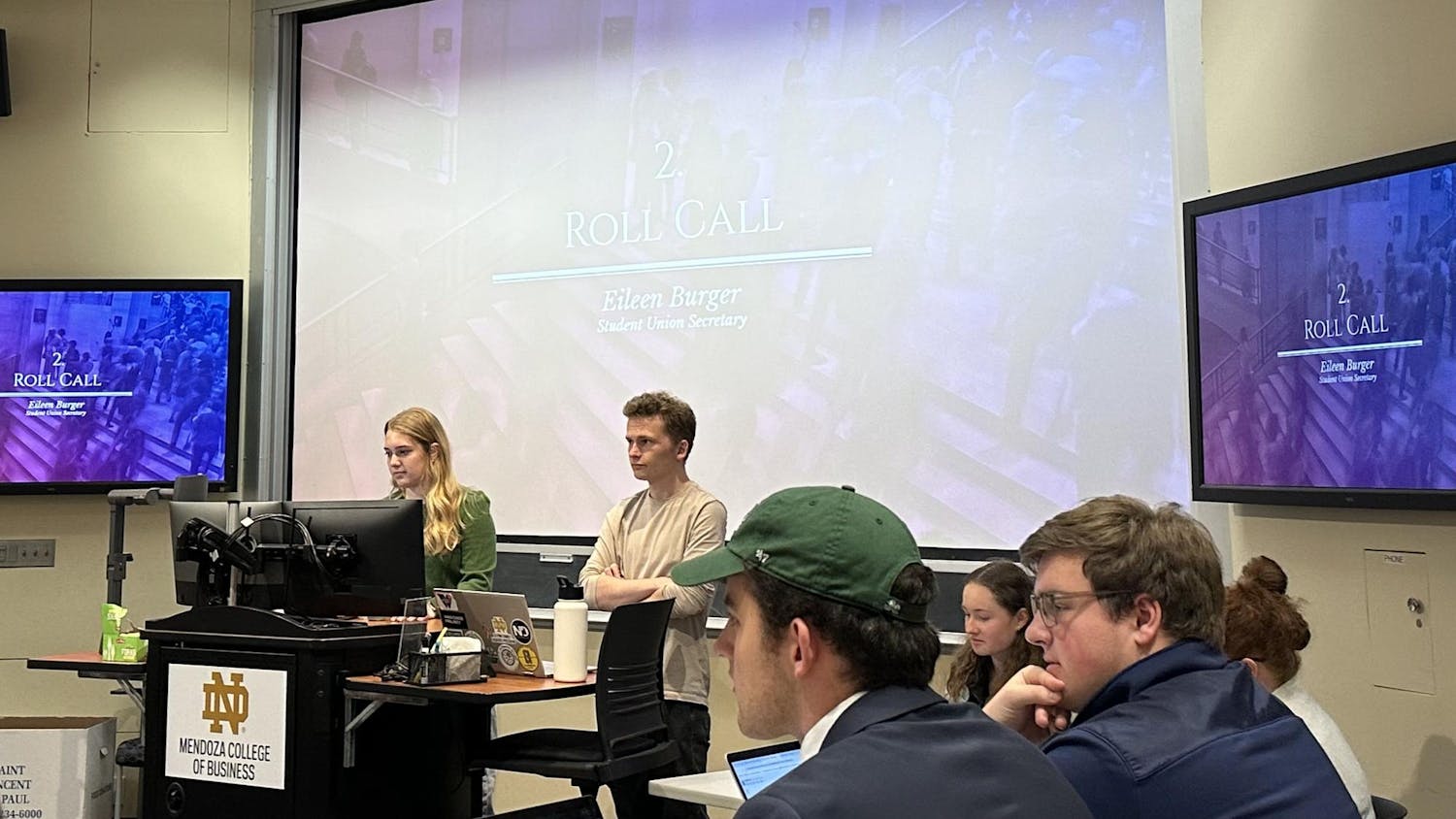String theory, a so-called "theory of everything" in physics, is a popular topic among more than just scientists. Juan Maldacena, professor of theoretical and astrophysics at the Institute for Advanced Study and one of the foremost researchers in the field of string theory, delivered a lecture Wednesday on the subject of chromodynamics, string theory and black holes.

Maldacena is most well-known for his 1997 paper on the large N limit of superconformal field theories and supergravity, which is the most-cited high energy physics paper of all time.
Maldacena began his talk by discussing the close relationship between quantum chromodynamics, a type of quantum field theory, and gravity theories, namely quantum gravity.
"The equality between these two things would be that the quantum field theory living on some space is equal to the quantum gravity living in the interior of that space," Maldacena said. "The idea is that the physics in the interior can be described by the physics that happens on the boundary."
In particular, Maldacena discussed supersymmetric versions of this theory using the maximum number of supersymmetries, although these versions are difficult to experimentally confirm. One of the reasons for the maximum supersymmetry assumption in the theory is that is greatly simplifies the case and makes complicated physics a more tractable problem, Maldacena said.
"There's this joke about a farmer who had a cow, and he needed to increase milk production," Maldacena said. "So he hires a veterinarian and a physicist to help him and the veterinarian tells him, 'Well you should feed the cows better, exercise, blah, blah, blah.' And then the physicist says, 'Well, let's first assume that we have a spherical cow.' So this theory can be called a hyperbolic cow."
In order to work out these theories, Maldacena used anti-de Sitter's space, which comes from the de Sitter space used to describe cosmological expansion.

"In some sense, anti-de Sitter space is like a gravitational box that does not allow massive particles to reach the boundaries," Maldacena said. "So if you sit in the middle of anti-de Sitter space and you throw a rock, after awhile the rock will come back to you. If you shoot a gun, then that's not a very good idea."
Using this approach, a natural duality arises between quantum field and gravity theories, which allows researchers to investigate fundamental questions in physics, he said.
"Duality in this relationship means, 'Take some parameter, and when the parameter takes some set of values, say small ones, then one description is easy,'" Maldacena said. "'Then if it takes another set of values, let's large ones, then the other description is simple.'"
When looking at systems of weakly-interacting gluons, essentially free ones, the string theory is the simplest description. When there are strongly-interacting gluons, the problem is still well-defined but difficult to analyze with string theory, in which case gravitational descriptions are better because the radius in the space is much larger. This leads to a good approximation of more complicated string theory by relatively simple gravity ones, Maldacena said.
"The good thing that gravity does for us is it allows us to solve the quantum field theory in a simple way," Maldacena said. "However, there are things that we can learn about gravity from the field theory. A particularly interesting thing is that it's useful for understanding quantum aspects of a black hole."
Black holes are gravitational collapses, where nothing can escape once the event horizon, a sort of boundary of the black hole, is passed, Maldacena said. But according to quantum dynamics, they can emit radiation, where the temperature at which the radiation is emitted is inversely proportional to the size of the black hole.
"This effect implies that the smaller you make the black hole, the hotter the temperature is," he said. "You can have the paradoxical equation of a black hole that can be white. So you have white black holes."
In physics the notion is that whenever there's a temperature, something is moving, Maldacena said, and one of the hot questions in the field is to describe what goes on in the interior of a black hole.
Maldacena said these complex descriptions of black holes can also be applied in a more generalized way to hydrodynamics, underscoring the fundamental nature of his research and the discipline of physics as a whole.
"As physicists, one of the laws of physics is that you take a problem and investigate by making it simpler," Maldacena said.












